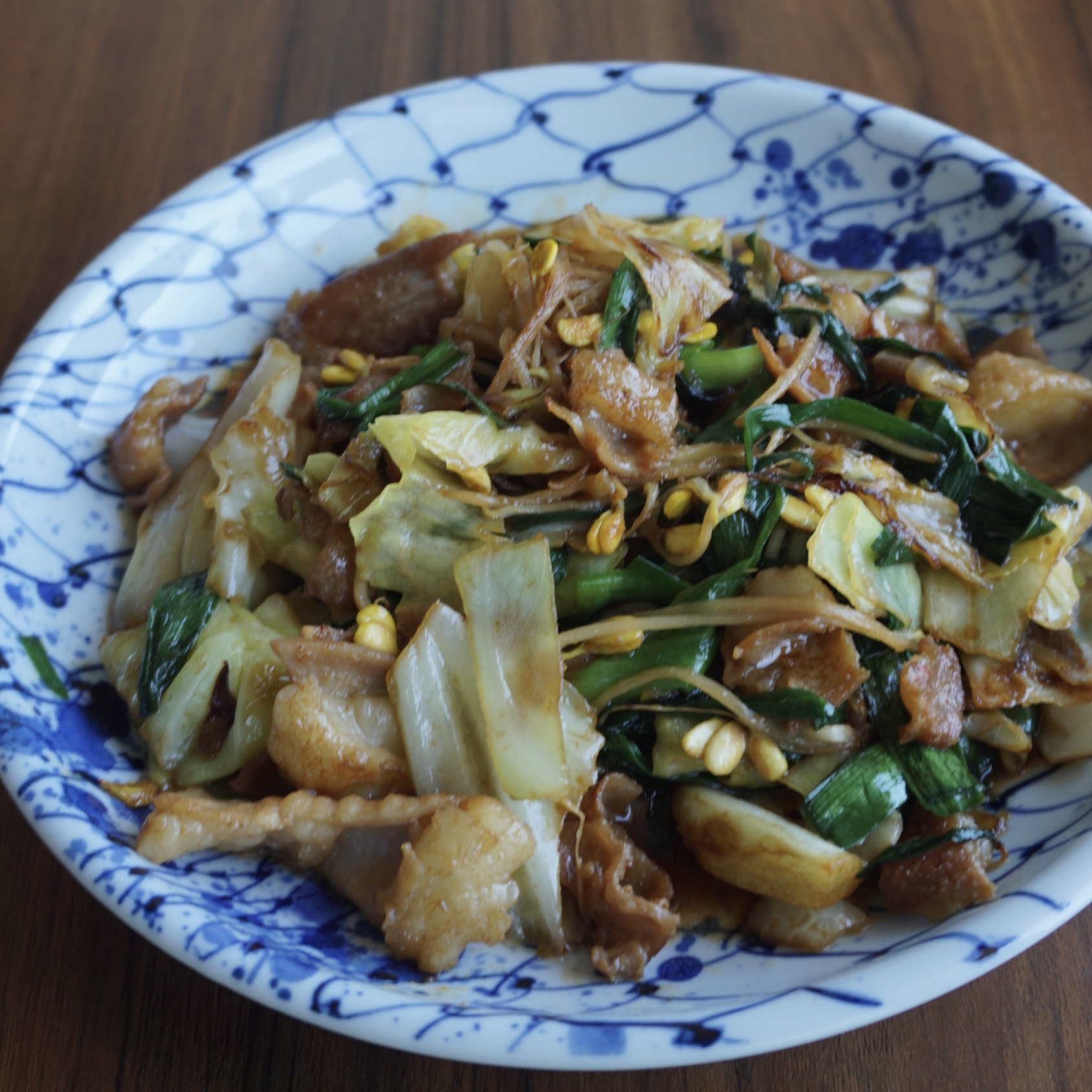
Horumonyaki (ホルモン炒め)
What kind of dish is Horumonyaki??
A dish of offal stir-fried with vegetables is called “horumonyaki”. This dish is appealing with its chewy texture of offal and the aroma of garlic.
offal = horumon stir fry = itame,yaki sauce = tare Japanese style BBQ = yakiniku
In Japanese, offal is called horumon, and there are many types of horumon.
The horumon used here is different from the horumon that regulates bodily functions.
This recipe uses shimachō (cow intestine). For more information about shimacho, see the Horumon Yakisoba article. 👇
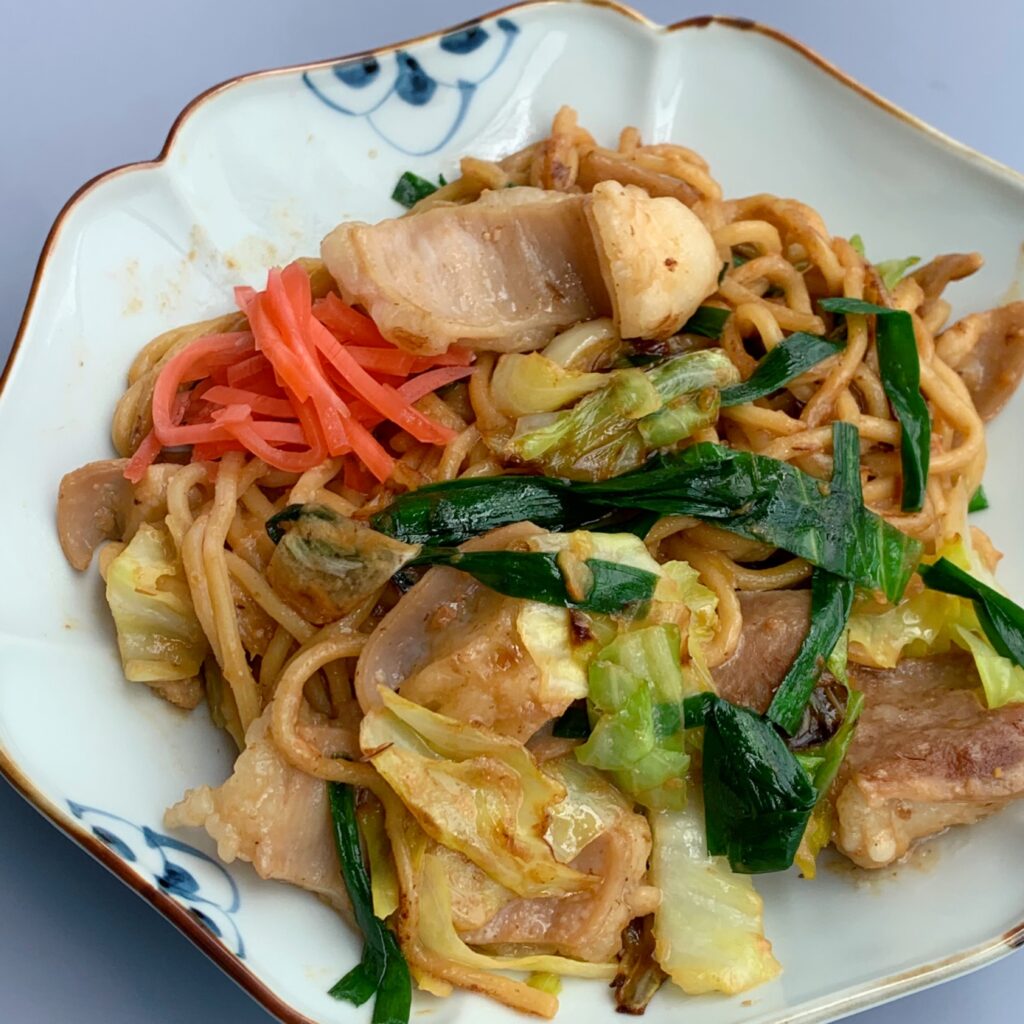
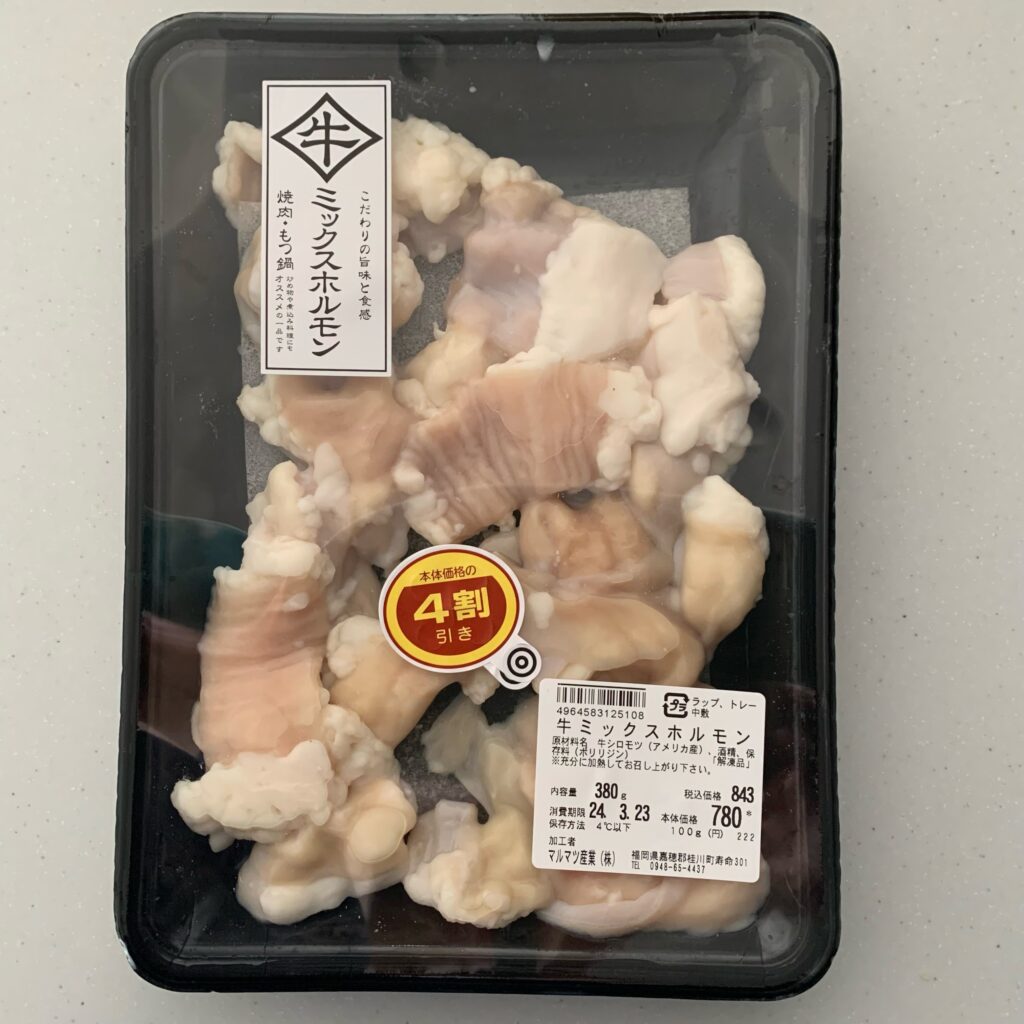
When cooking horumon, I always have a hard time deciding whether to use soy sauce, miso, or yakiniku sauce. Either way is delicious.
I used a store-bought yakiniku sauce this time, but it’s also a good idea to make your own yakiniku sauce by mixing garlic, ginger, soy sauce, and gochujang.
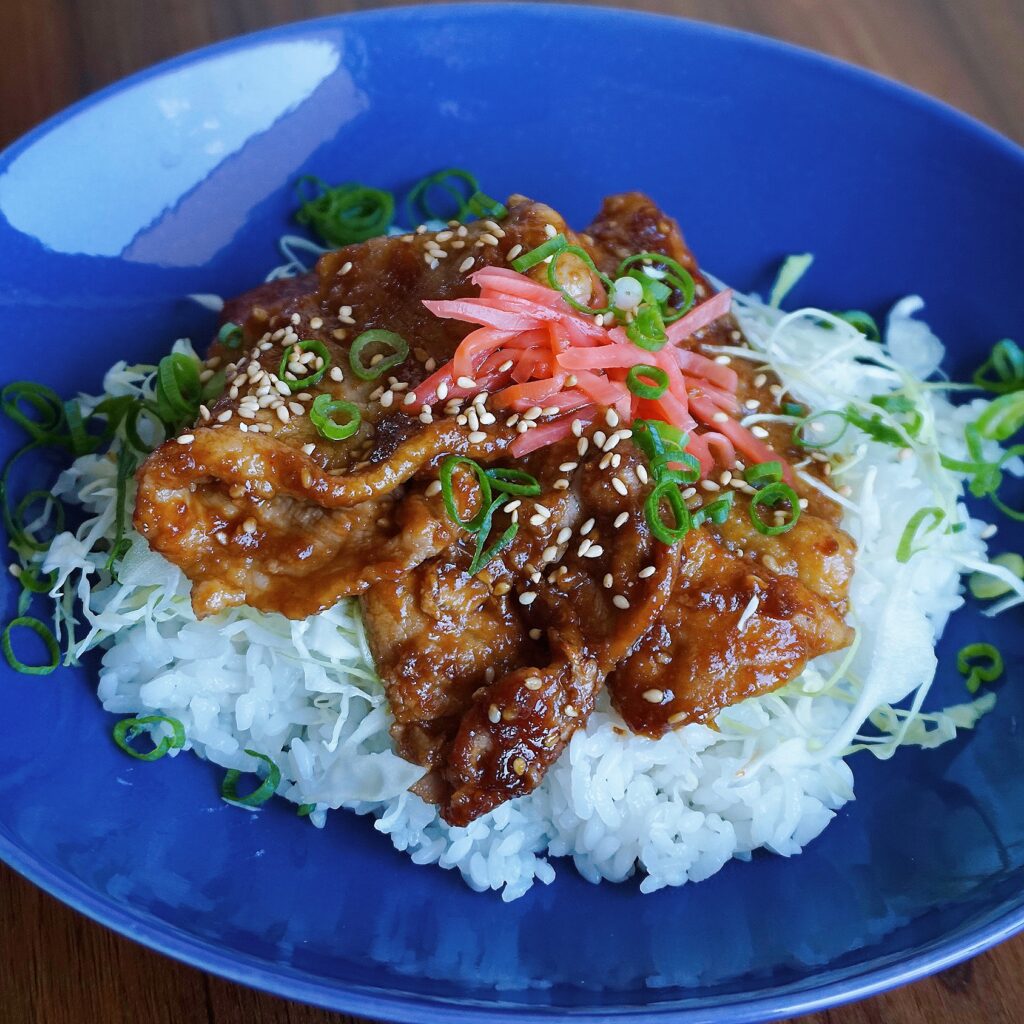
What kind of food is Yakiniku no tare??
“Yakiniku no tare” is a soy sauce based seasoning that combines spices such as garlic and chili peppers, sweeteners such as fruits and sugar, and aromatic vegetables such as celery.
The one I used this time is Tomura Yakiniku no Tare. This is a product manufactured by a butcher in Miyazaki Prefecture.
Ebara’s “Ougon no tare” is also recommended.
Tomura’s OFFICIAL WEB SITE 👉 https://www.tomura.com
Ebara’s OFFICIAL WEB SITE 👉 https://www.ebarafoods.com/products/yakiniku
NUTRITION FACTS of Horumonyaki (Stir Fried Beef Offal With Yakiniku Sauce)

TOTAL NUTRITION VARUE
- 597 calories
- Protein 36.4 g
- Total Fat 37.3 g
- Total carbohydrate 36.5 g
- Sodium 6.9 g
Since the fat from the hormones is discarded, the nutritional value is calculated assuming that 70% of the total amount is used.
Beef offal (shimacho) NUTRITION VARUE PER 100g
- 150 calories
- Protein 9.3 g
- Total Fat 13.0 g
- Total carbohydrate 0 g
- Sodium 0.2 g
INGREDIENTS : Horumonyaki (Stir Fried Beef Offal With Yakiniku Sauce)
- Beef offal (shimacho) 400g
- Cabbage 200g
- Bean sprouts 100g
- Chinese Chives 40g
- Tomura’s Yakiniku no tare 50~80g
How to make Horumonyaki (Stir Fried Beef Offal With Yakiniku Sauce)
- Put the Offal (shimacho) in a pot and fry. (Put Offal (shimacho) in a pan and fry it. During this process, a lot of water and oil will come out of the Offal. If you pour that into the kitchen sink, it will be very difficult to clean up. Therefore, to make it easier to clean up, fry the Offal in a pan lined with parchment sheet, then transfer it to another pan. When it cools down, the fat will solidify inside the parchment sheet, so you can just discard it. Be careful not to burn the parchment sheet.)
- Fry until the surface of Offal (shimacho) is crispy. While cooking, wipe off any excess oil that comes out of the horumon with a paper towel.
- While the Offal (shimacho) is frying, cut the cabbage into bite-sized pieces, the chives into 4cm lengths.
- Place the washed and drained bean sprouts in a pot.
- Add the cabbage to the pot and cook until it is slightly softened.
- Add the chives and stir fry briefly, then add the yakiniku sauce.
- Stir-fry over high heat.
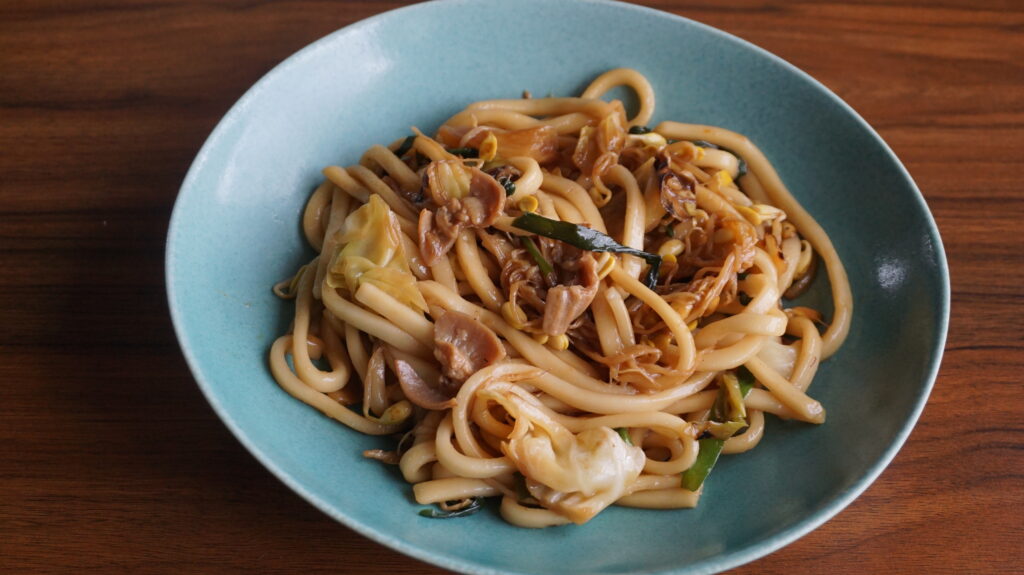
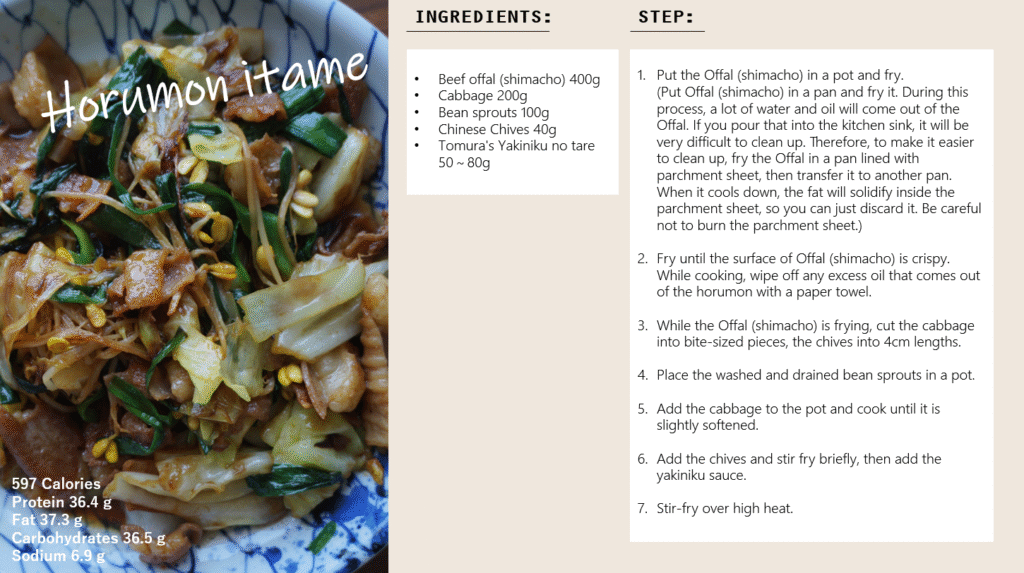
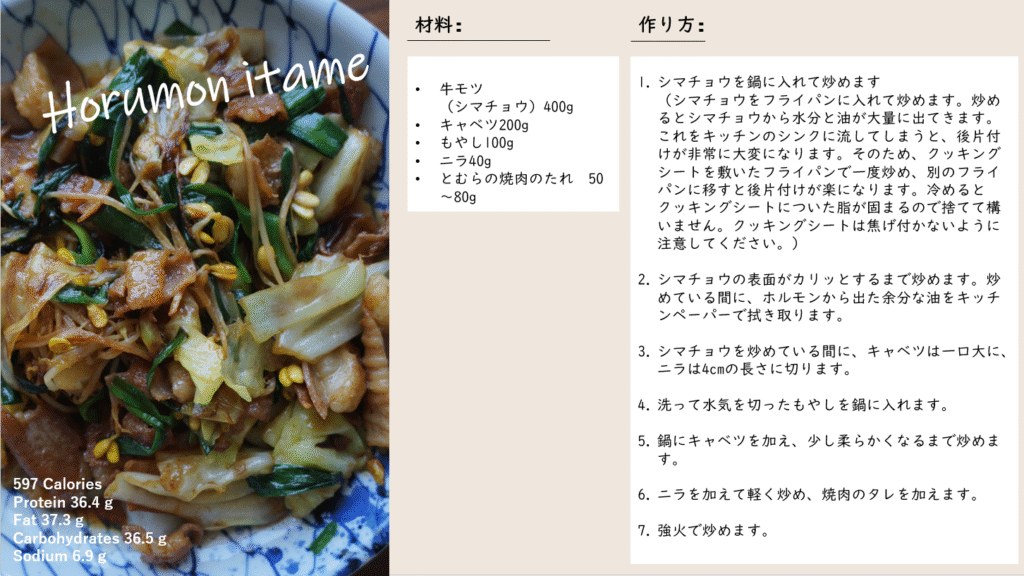


コメント